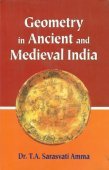Poona: 2 definitions
Introduction:
Poona means something in the history of ancient India, biology. If you want to know the exact meaning, history, etymology or English translation of this term then check out the descriptions on this page. Add your comment or reference to a book if you want to contribute to this summary article.
India history and geography
Source: What is India: Annual Report on Indian Epigraphy (1945-1952)Poona is an archaeologically important site situated in Poona-taluk (Poona district, Bombay), known for inscriptions regarding the ancient history of India. For example, at Poona there is a Prakrit inscription on a terracotta seal from Kolhapur at the Deccan College Post-Graduate Re search Institute. It reads Bhagavato Laja-Bhaṭṭasa. In characters of about the 3rd century A.D. and bears the figure of a trident in the centre.

The history of India traces the identification of countries, villages, towns and other regions of India, as well as mythology, zoology, royal dynasties, rulers, tribes, local festivities and traditions and regional languages. Ancient India enjoyed religious freedom and encourages the path of Dharma, a concept common to Buddhism, Hinduism, and Jainism.
Biology (plants and animals)
Source: Google Books: CRC World Dictionary (Regional names)1) Poona in India is the name of a plant defined with Calophyllum inophyllum in various botanical sources. This page contains potential references in Ayurveda, modern medicine, and other folk traditions or local practices It has the synonym Calophyllum inophyllum Lam. (among others).
2) Poona is also identified with Pongamia pinnata It has the synonym Dalbergia arborea Willd. (etc.).
Example references for further research on medicinal uses or toxicity (see latin names for full list):
· Recent Res. Pl. Sci.. (1979)
· Flora Cochinchinensis (1790)
· Flora of Bilaspur District, Madhya Pradesh (1989)
· Journal of the Bombay Natural History Society (1971)
· Encyclopédie Méthodique, Botanique (1788)
· Isis (1828)
If you are looking for specific details regarding Poona, for example side effects, pregnancy safety, health benefits, chemical composition, diet and recipes, extract dosage, have a look at these references.

This sections includes definitions from the five kingdoms of living things: Animals, Plants, Fungi, Protists and Monera. It will include both the official binomial nomenclature (scientific names usually in Latin) as well as regional spellings and variants.
See also (Relevant definitions)
Starts with (+12): Poonaachu, Poonai vanangi, Poonaivanagi, Poonakkathi, Poonam, Poonas, Poonaverie, Punaccippul, Punai, Punai-kankal, Punai-kankeliru, Punai-kankunkiliyam, Punai-kanpurutarakam, Punai-kanvaituriyam, Punai-kayvelai, Punaikkalarci, Punaikkaycci, Punaikkeliru, Punaikkirai, Punaimuli.
Full-text (+593): Poonas, Puneri, Ashtavinayaka, Karnamrita, Agnistava, Arcashuddhipaddhati, Krishnayantrapujapaddhati, Ganapatimantravidhana, Caturmasyaprayashcitta, Vakratundapujavidhi, Vinayakotpatti, Shashthyupakhyanastotra, Apamrityupariharakastotra, Mohinirajasahasranamavali, Yogabhadra, Karmatattva, Ganesharcaprayoga, Gautamashramavarnana, Laghugita, Shauryavishaya.
Relevant text
Search found 57 books and stories containing Poona; (plurals include: Poonas). You can also click to the full overview containing English textual excerpts. Below are direct links for the most relevant articles:
The Markandeya Purana (by Frederick Eden Pargiter)
Canto CXXXV - Dama’s exploits (continued)
Canto CXVII - Khanitra’s exploits
Bharadvaja-srauta-sutra (by C. G. Kashikar)
New Ways in Marathi Literature < [March-April 1931]
The Marathi Drama < [January-February, 1929]
‘The Triple Stream’ < [September-October 1932]
The backdrop of the Srikanthacarita and the Mankhakosa (by Dhrubajit Sarma)
Buddhist Monastic Discipline (by Jotiya Dhirasekera)
Anumana in Indian Philosophy (by Sangita Chakravarty)
Related products
